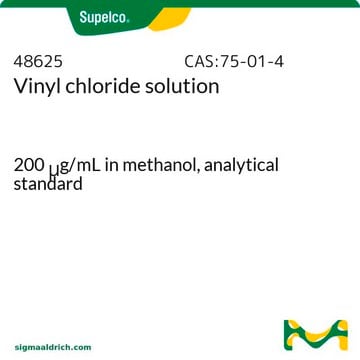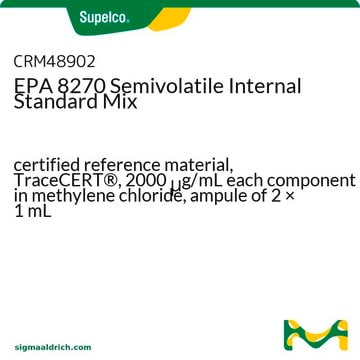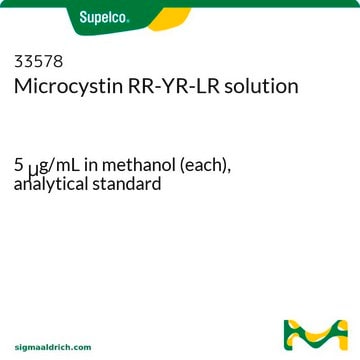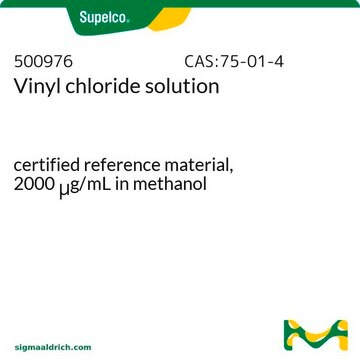48600
Dichloromethane solution
certified reference material, 200 μg/mL in methanol
Synonim(y):
Methylene chloride solution
About This Item
Polecane produkty
klasa czystości
certified reference material
TraceCERT®
linia produktu
TraceCERT®
Certyfikat analizy
current certificate can be downloaded
opakowanie
ampule of 1 mL
stężenie
200 μg/mL in methanol
metody
HPLC: suitable
gas chromatography (GC): suitable
gęstość
0.791 g/cm3
Zastosowanie
agriculture
environmental
format
single component solution
temp. przechowywania
2-8°C
ciąg SMILES
ClCCl
InChI
1S/CH2Cl2/c2-1-3/h1H2
Klucz InChI
YMWUJEATGCHHMB-UHFFFAOYSA-N
Szukasz podobnych produktów? Odwiedź Przewodnik dotyczący porównywania produktów
Zastosowanie
Informacje prawne
Hasło ostrzegawcze
Danger
Zwroty wskazujące rodzaj zagrożenia
Zwroty wskazujące środki ostrożności
Klasyfikacja zagrożeń
Acute Tox. 3 Dermal - Acute Tox. 3 Inhalation - Acute Tox. 3 Oral - Flam. Liq. 2 - STOT SE 1
Organy docelowe
Eyes,Central nervous system
Kod klasy składowania
3 - Flammable liquids
Klasa zagrożenia wodnego (WGK)
WGK 2
Temperatura zapłonu (°F)
51.8 °F - closed cup
Temperatura zapłonu (°C)
11 °C - closed cup
Wybierz jedną z najnowszych wersji:
Masz już ten produkt?
Dokumenty związane z niedawno zakupionymi produktami zostały zamieszczone w Bibliotece dokumentów.
Klienci oglądali również te produkty
Nasz zespół naukowców ma doświadczenie we wszystkich obszarach badań, w tym w naukach przyrodniczych, materiałoznawstwie, syntezie chemicznej, chromatografii, analityce i wielu innych dziedzinach.
Skontaktuj się z zespołem ds. pomocy technicznej













